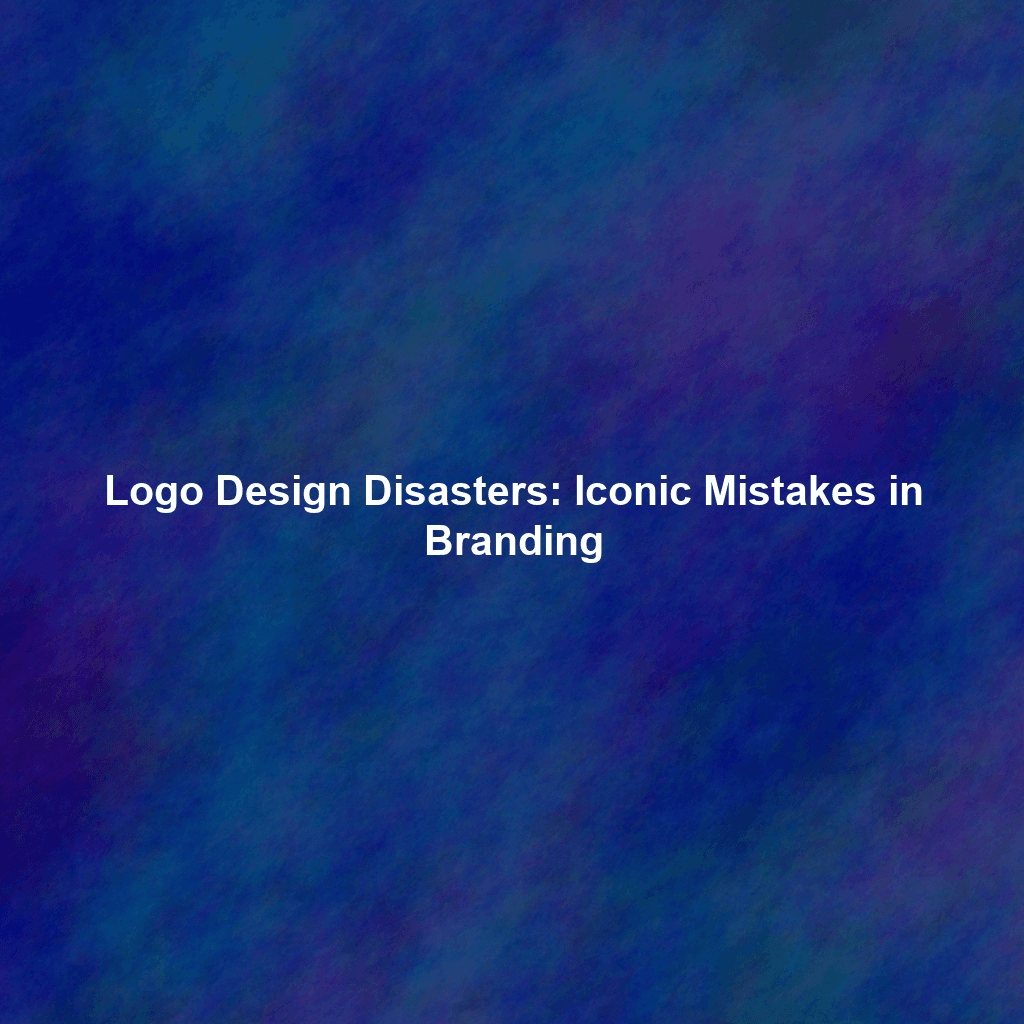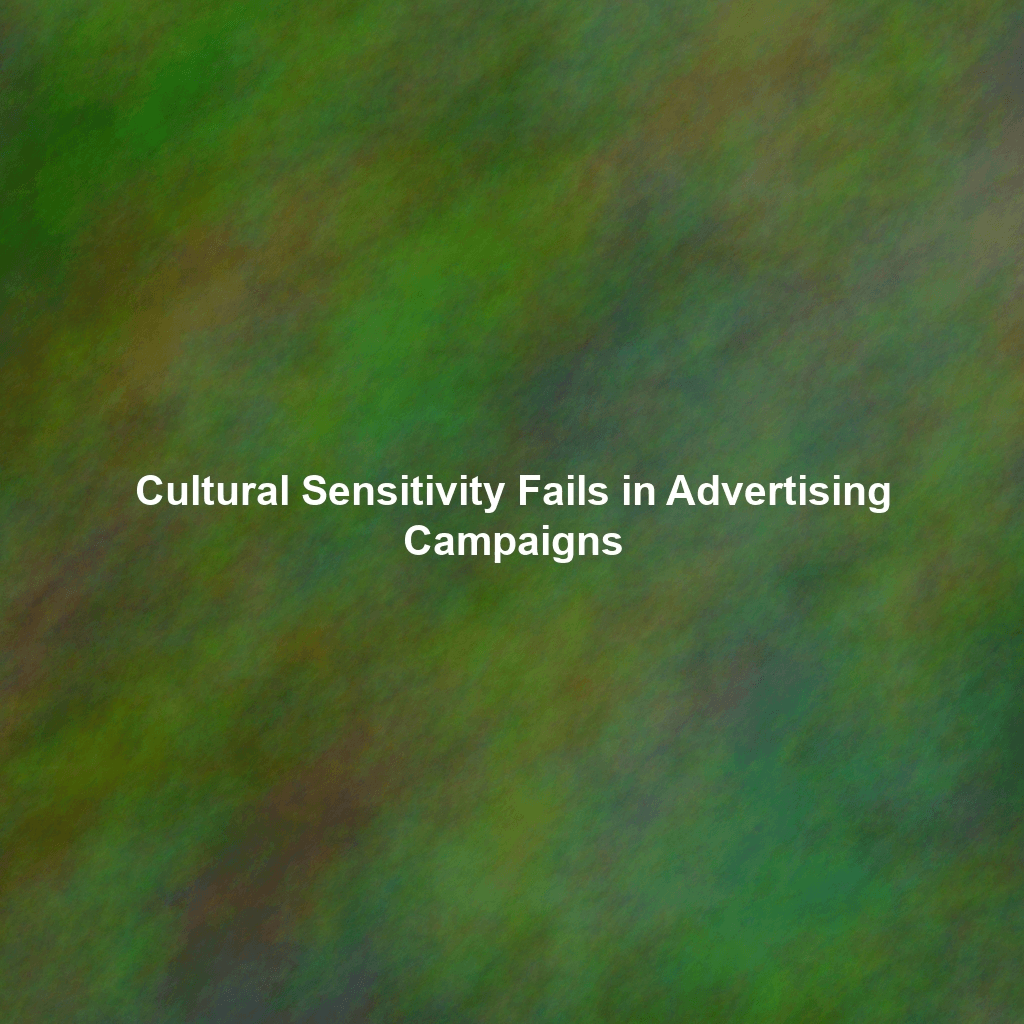Introduction: When Good Logos Go Bad
Case Studies in Logo Catastrophe
1. The London Olympics 2012: A Generational Divide
Designed by Wolff Olins, the London Olympics 2012 logo was unveiled to a storm of criticism. While the designers aimed for a bold and modern representation of the games, the public’s reaction was overwhelmingly negative. Many saw it as amateurish, visually jarring, and even reminiscent of Lisa Simpson performing a suggestive act. The logo generated countless parodies and satirical memes, quickly becoming a symbol of design gone wrong.
The issue wasn’t necessarily the abstract nature of the design. Abstract logos can be highly effective (think Nike’s swoosh or Apple’s apple). The problem was the execution. The shapes were awkward, the colors clashed, and the overall composition lacked visual harmony. Furthermore, it failed to resonate with a broad audience, alienating older generations who found it confusing and unattractive. The lesson? A modern design needs to be accessible and appealing to a wide demographic, or risk becoming a symbol of disconnect rather than unity.
2. Gap’s Brief and Ill-Fated Redesign
In 2010, clothing giant Gap decided to refresh its iconic logo, replacing the familiar blue square with a smaller, almost timid, blue square and the brand name in a generic Helvetica font. The internet erupted in outrage. Loyal customers felt betrayed by the sudden and unnecessary change to a beloved brand element. Social media became a battleground, with thousands of people voicing their displeasure and even creating their own alternative logo designs.
What makes this case particularly interesting is that Gap listened. Within days, the company reverted to its original logo, acknowledging the overwhelming negative feedback. This incident highlights the importance of understanding your target audience and respecting the equity built around existing brand elements. Sometimes, the best design is the one you already have. Furthermore, it showcases the power of social media in shaping brand perception and forcing companies to reconsider their decisions.
3. Tropicana’s Packaging Redesign: Squeezing Out Brand Recognition
Around the same time as Gap’s logo debacle, Tropicana, owned by PepsiCo, redesigned its packaging. The familiar orange with a straw became a sleek, modern design featuring a glass of orange juice. The company also changed the font and the overall layout. The result? A significant drop in sales. Consumers simply couldn’t find their favorite orange juice on the shelves. The new packaging looked too generic and failed to evoke the brand’s history and association with fresh, natural juice.
This case demonstrates the importance of brand recognition and visual cues. Consumers rely on familiar packaging to quickly identify products. When those visual cues are altered dramatically, it can lead to confusion and lost sales. Tropicana eventually reverted to the original packaging, proving that sometimes, sticking with what works is the best strategy. The lesson here is to be mindful of the emotional connection consumers have with established brands and avoid making changes that disrupt that connection.
4. The Catholic Church’s Scandalous Logo
In 1973, the Catholic Church was embroiled in a logo controversy. The logo, designed for the Archdiocese of Milwaukee, featured abstract shapes that, unfortunately, bore an unintended resemblance to inappropriate imagery. While the designer’s intentions were undoubtedly pure, the public perception was far from favorable. The logo quickly became a source of embarrassment and ridicule for the Church.
This example illustrates the critical importance of thorough testing and feedback during the design process. Even seemingly harmless abstract shapes can carry unintended connotations. It’s crucial to show logo designs to a diverse group of people and solicit their honest opinions before launching them publicly. A logo should be scrutinized for potential misinterpretations or offensive imagery to avoid public relations disasters.
5. A Local Business Nightmare: The Importance of Professionalism
While large corporations often grab headlines with their logo mishaps, small businesses are equally vulnerable to design disasters. Imagine a local plumbing company whose logo features a dripping faucet positioned in a way that resembles a bodily function. Or a daycare center with a logo that uses unsettling colors and imagery. These seemingly minor design flaws can have a significant impact on a small business’s reputation and ability to attract customers.
The lesson here is clear: investing in professional logo design is essential for businesses of all sizes. A well-designed logo communicates professionalism, trustworthiness, and attention to detail. It signals to potential customers that you take your business seriously and are committed to providing high-quality products or services. Skimping on logo design can ultimately cost you more in the long run.
Key Takeaways: Avoiding Logo Design Pitfalls
1. Know Your Audience
Understanding your target audience is paramount. What are their values? What aesthetic preferences do they have? What are their expectations of your brand? A logo that resonates with one demographic may alienate another. Thorough market research and audience analysis are crucial for creating a logo that effectively communicates your brand message.
2. Simplicity is Key
The most effective logos are often the simplest. Think of Nike’s swoosh, Apple’s apple, or McDonald’s golden arches. These logos are instantly recognizable, memorable, and versatile. Avoid overly complex designs that are difficult to reproduce or understand. A simple, clean logo will stand the test of time and effectively communicate your brand identity.
3. Consider Cultural Sensitivity
If your business operates in multiple countries or cultures, it’s essential to consider cultural nuances and sensitivities. Colors, symbols, and imagery can have different meanings in different cultures. A logo that is perfectly acceptable in one country may be offensive or inappropriate in another. Conducting thorough cultural research is vital to avoid unintentional missteps.
4. Seek Professional Help
Designing a logo is not as easy as it may seem. It requires a deep understanding of design principles, color theory, typography, and branding. Unless you have significant design experience, it’s best to hire a professional logo designer or branding agency. A skilled designer can help you create a logo that is not only visually appealing but also effectively communicates your brand message and resonates with your target audience.
5. Test, Test, and Test Again
Before launching a new logo, it’s crucial to test it with a diverse group of people and solicit their honest feedback. Ask them what they think the logo represents, what emotions it evokes, and whether it accurately reflects your brand identity. Use their feedback to refine your design and ensure that it effectively communicates your message.
Conclusion: Learning from the Mistakes of Others
The world of logo design is littered with examples of what not to do. From poorly executed abstract designs to culturally insensitive imagery, these logo design disasters serve as valuable lessons for aspiring designers and business owners alike. By understanding the reasons behind these failures and following the key takeaways outlined above, you can avoid making similar mistakes and create a logo that effectively communicates your brand identity, resonates with your target audience, and stands the test of time. Remember, a logo is more than just a pretty picture; it’s the face of your company and a crucial element in building a strong and recognizable brand.
 Skip to content
Skip to content

